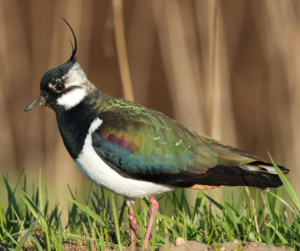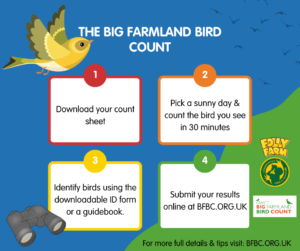Get out & about this February, with the annual Big Farmland Bird Count!
Spring is nearly here, but with food for the wild birds becoming scarce it’s time to check up on our native feathered friends!

We love the variety of native birds we have on our doorstep. Recording birds is a way of making sure they aren’t disappearing and to ensure that they have what they need to thrive in our Welsh landscape. It is also a great way of recording the effect of some great conservation schemes taking place by farmers and landowners, such as supplementary feeding, growing wild bird seed crops and hedge planting.

This time of year, toward the end of winter is known as the ‘hungry gap’! Natural food is becoming scarcer for wild birds and with less weeds and seeds in our landscape these little critters are struggling.
Farmland birds across the UK have declined by a massive 56% since 1970. More locally, the iconic Yellowhammer has been reported to be close to extinction in Pembrokeshire, with just 100 birds remaining compared to 15,000 pairs recorded in the 1980’s. Yellowhammers are now known as a Red List species but maybe you’ll be able to spot some this February?

The Big Farmland Bird Count was launched in 2014 by the Game & Wildlife Conservation Trust and this year it is running between the 3rd to 19th February. If you are a farmer, landowner or know someone that is, then this is one easy way to help your local wildlife. Simply download the counting form, pick a sunny, calm day and identify which birds you see in 30 minutes. A handy ID guide is also available to help you identify who’s who. It’s a great activity to get the kids involved in!
Once you have done your headcount, submit your results through the BFBC webpage.